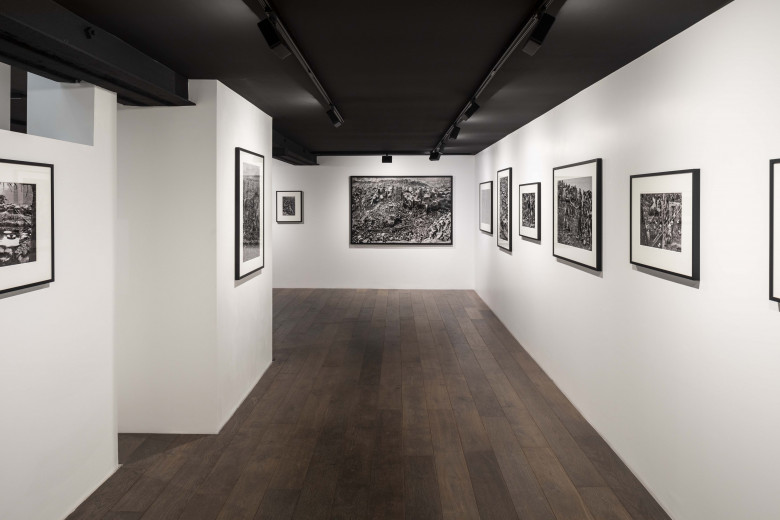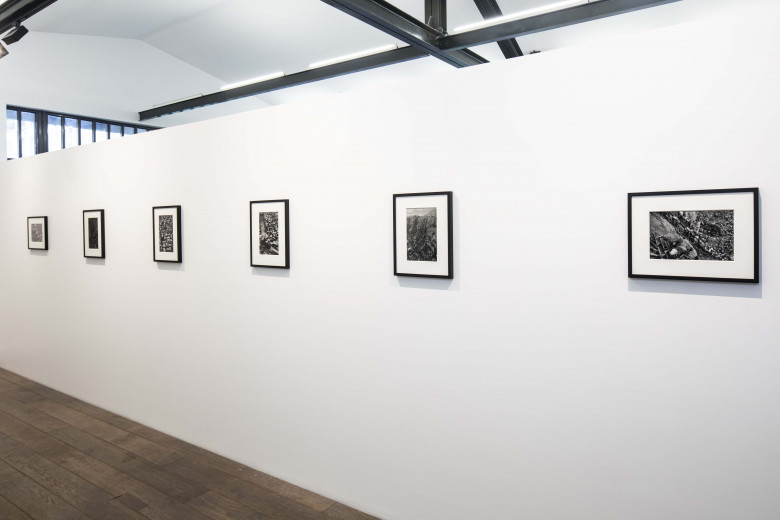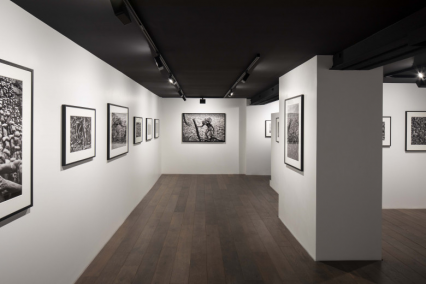Polka gallery is proud to present Sebastião Salgado’s “Gold”, an exhibition featuring thirty photographs, most of them exhibited for the first time, from one of the artist’s most significant series.
In September 1986, after years of refusal, Salgado finally received authorization from the Brazilian military authorities to visit Serra Pelada (“Naked Mountain” in English), located in the north Brazilian state of Pará. Tens of thousands of hopefuls swarmed to the teeming open pit of a gold mine in search of El Dorado. Plunged into the terrible conditions imposed by mud, riots and horrific violence, these people struggled and chiseled away like slaves on the few cubic meters of land entrusted to them over the course of ten years.
“The first time I saw the mine,” remembers Salgado, “I stood frozen, at a loss for words. Goosebumps crawled up my skin as I lay eyes on fifty-two thousand men toiling in a gaping hole two hundred meters deep without the help of a single machine. Some heaved heavy bags filled with soil up narrow wooden ladders, while others hurtled down the muddy slopes into the abyss. Every one of them, without exception, was stained the same ochre color of the earth they were mining: their bodies, their feet, their faces, their necks blended into the dirt, colored by rich iron ore." Among brawls and disease, deadly falls and landslides, “for many of them the thirst for gold was stronger than their fear of death.”
The photographs taken by Sebastião Salgado over the course of the thirty-five days he spent at the mine constitute the most iconic testimony of and homage to the Brazilian Gold Rush.
The series, originally intended to make up a chapter of “Workers”, the photographer’s opus on the archeology of the industrial era, cemented what we now recognize as his signature black and white style. According to him, “color disguises the work’s message, while black and white is merely an abstraction. The whole image transforms into a range of grays, and only with that we can really begin to express a deeper meaning.” Published a few months later by the Sunday Times and New York Times magazine, this iconic series helped to reintroduce black and white photography into the world of the press.
Thirty years later Sebastião Salgado returned to the series, rediscovering dozens of previously unpublished and undistributed images. “When I first published this work, I did not intend it as a monograph,” the photographer says. “I knew that I had a lot more material, but I did not dive back into the Serra Pelada archives until much later, in 2016, after sustaining a knee injury in the Amazon that forced me to stop working for six months. I took the time to revisit my original prints, and even my contact sheets. I discovered a huge number of new works, including a series of portraits that I had not selected at the time.”
Today nothing remains of Serra Pelada. The view stretches over a scarred landscape surrounding a lake two hundred meters deep. "Brazil’s wild gold rush,” concludes Sebastião Salgado, “is now nothing more than the stuff of legends, kept alive by a few happy memories, many painful regrets, and photographs.”





